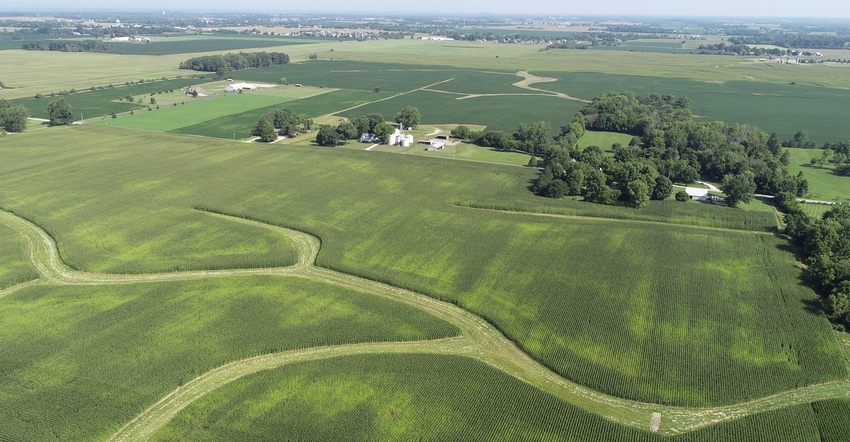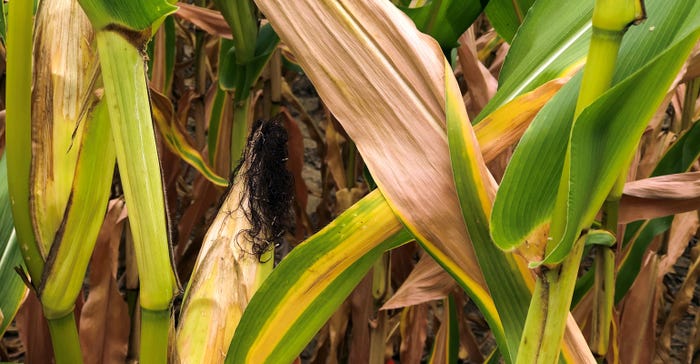
If you have any doubts about whether aerial scouting with a drone is worth the effort, this example from the Corn Watch ’21 field should make you a believer. Corn along the road remained dark green all season. But Dave Nanda knew from walking into the field that some spots were lighter green early in the season when soils were still very wet. Those same spots began to show signs of nitrogen deficiency on lower leaves by the time corn pollinated.
Related: Silk clipping takes toll on kernel counts
“What we couldn’t tell from walking out into tall corn was how extensive the lighter, pale-green-colored spots with more nitrogen deficiency were,” Nanda says. “No one is going to walk an entire field to find out where all problem areas are when corn is pollinating or after.”
Nanda is director of genetics for Seed Genetics Direct, the company that sponsors Corn Watch ’21.
More accurate picture
Nathan Bush, an agronomist with Greene Crop Consulting, Franklin, Ind., flew his drone over the field in early August. He prepared a map, plus captured several still images of the field. Differences in color in various areas of the field were very evident once the drone sent back images, Bush says.
Armed with these images, it’s possible to do a more accurate job of estimating what yields might be because you can get a better feel for what percentage of the field is affected by apparent nitrogen loss, Nanda says. From the air, you can see more affected areas on the right side of the field. That corresponds with where there are somewhat poorly drained, lower organic matter soils, the grower reports.
Nitrogen was injected preplant in early April, with some applied with the planter as well. Too many days of saturated soils apparently allowed nitrogen losses to add up.

“We also noted a considerable amount of symptoms which appear to be sulfur deficiency,” Nanda says. “They were apparent early, but some leaves were still showing those symptoms when corn was in the dough stage.”
Dan Quinn, Purdue University Extension corn specialist, received several reports of signs of sulfur deficiency in corn earlier in the season during the vegetative stage. He believes it’s a nutrient worth watching in the future.
About the Author(s)
You May Also Like




